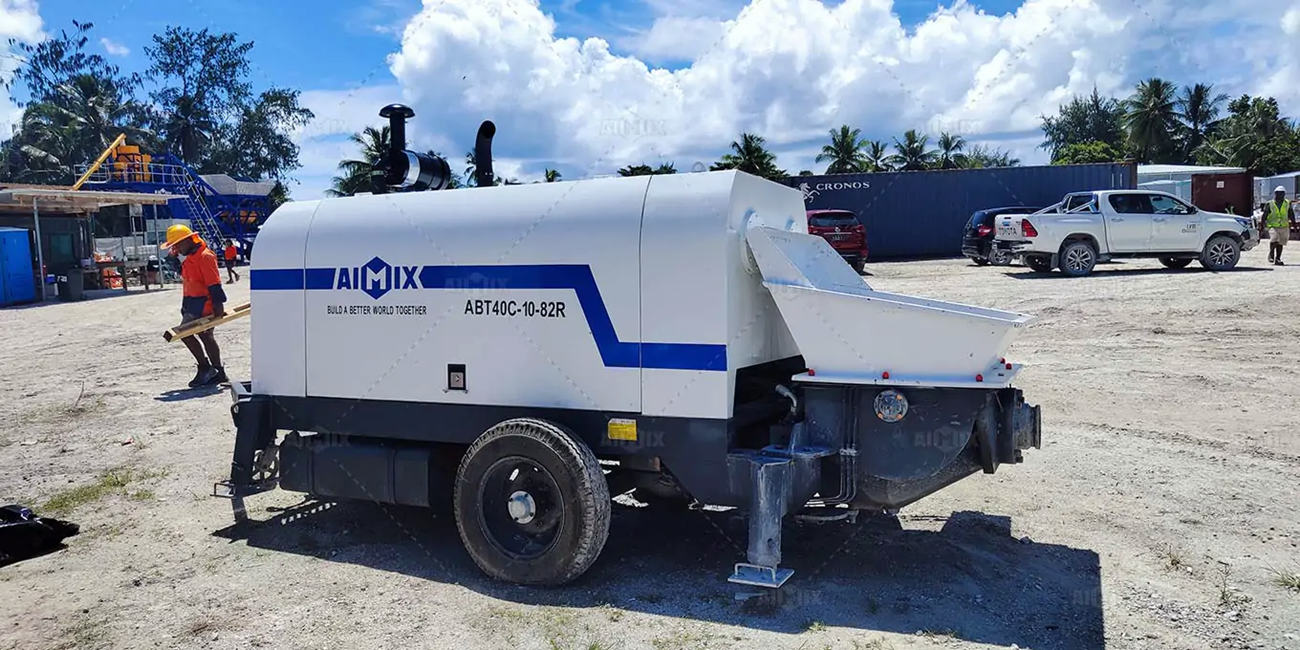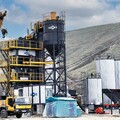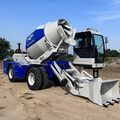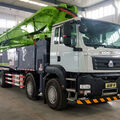Concrete pumping technology has revolutionized the construction industry by enabling efficient and precise concrete placement in various projects. In Canada, where construction demands vary from urban high-rises to remote infrastructure, stationary concrete pumps (also known as line pumps) play a crucial role. Unlike boom pumps, which are mounted on trucks and offer mobility, stationary concrete pumps are fixed in place and use hoses to deliver concrete to the desired location.

This article explores the types of projects in Canada where stationary concrete pumps for sale are commonly used, their advantages, and key considerations for selecting the right equipment.
Residential Construction Projects
Single-Family and Multi-Unit Housing
In Canada’s growing housing market, stationary concrete pumps are widely used for:
Foundations & Footings: Pumping concrete into formwork for basements and slab-on-grade foundations.
Driveways & Sidewalks: Efficiently placing concrete for smooth, durable surfaces.
Low-Rise Apartment Buildings: Ideal for projects where a truck-mounted boom pump may be too large or costly.
Custom Home Features
Decorative Concrete Work: Pumping high-quality mixes for stamped concrete patios, pool decks, and exposed aggregate finishes.
Retaining Walls & Landscaping: Precise placement in tight spaces where manual pouring is impractical.
Why Use a Stationary Pump?
Cost-effective for small to medium projects.
Easier access in narrow urban lots where large trucks cannot maneuver.
Reduced labor requirements compared to manual pouring.
Commercial & Industrial Construction
Warehouses & Factories
Large industrial floors require high-volume concrete placement with minimal joints. Concrete pump stationary help:
Pour thick, reinforced slabs efficiently.
Maintain consistent flow rates for uniform curing.
Reduce downtime compared to traditional methods.
Shopping Centers & Office Buildings
Parking Garages: Pumping concrete to elevated decks and columns.
Interior Floors: Smooth placement in multi-story buildings.
Advantages in Commercial Projects:
Faster project completion due to continuous pumping.
Ability to handle high-strength and fiber-reinforced mixes.
Infrastructure & Civil Engineering Projects
Bridges & Overpasses
Abutments & Piers: Precise placement in complex formwork.
Bridge Decks: Pumping concrete over long distances or heights.
Road & Highway Construction
Curbs & Barriers: Efficiently filling long, narrow forms.
Tunnel Linings: Pumping shotcrete or high-performance concrete.
Dams & Hydroelectric Projects
Mass Concrete Placement: Large volumes with controlled cooling requirements.
Remote Locations: Stationary pumps can be set up with extended pipelines.
Why Infrastructure Projects Rely on Stationary Pumps?
Ability to work in confined or hard-to-reach areas.
High-pressure pumping for thick or reinforced sections.
Agricultural & Rural Applications
Farm & Ranch Construction
Silos & Feed Bunks: Durable concrete structures for livestock.
Grain Storage Floors: Smooth, crack-resistant surfaces.
Rural Road & Culvert Work
Culvert Foundations: Pumping in remote areas without ready-mix truck access.
Irrigation Channels: Efficient placement in long, narrow trenches.
Benefits for Rural Projects:
Can be powered by generators in off-grid locations.
Lower transport costs compared to truck-mounted pumps.
Specialized Applications
Underground & Mining Work
Shaft Sinking & Tunneling: Pumping concrete deep underground.
Mine Reinforcement: Shotcrete for stabilizing walls and ceilings.
Marine & Coastal Structures
Seawalls & Docks: Corrosion-resistant concrete placement.
Floating Docks: Precise pumping in challenging tidal conditions.
High-Rise Building Cores & Elevator Shafts
Tall Structures: Stationary pumps can be set up at different levels for continuous pouring.
Key Considerations When Choosing a Stationary Concrete Pump in Canada
Pump Specifications
Output Capacity (m³/h): Match the pump’s output to project demands.
Pressure Rating (Bar/PSI): Higher pressure for tall or long-distance pumping.
Engine Type: Diesel for remote sites, electric for urban projects.
Pipeline Setup
Hose Length & Diameter: Longer pipelines require more pressure.
Valve System: S-valve pumps handle larger aggregates; rock-valve pumps are better for abrasive mixes.
Climate Adaptations
Cold Weather Pumping: Heated water systems and insulated hoses for Canadian winters.
Hot Weather Precautions: Retarders to prevent premature setting.
Maintenance & Support
Local Service Availability: Ensure spare parts and technicians are accessible.
Training for Operators: Proper use reduces downtime and wear.
Stationary concrete pumps are indispensable in Canada’s diverse construction landscape, from residential foundations to massive infrastructure projects. Their flexibility, efficiency, and ability to work in confined spaces make them a preferred choice for contractors.
When searching for a concrete line pump for sale Canada, evaluate project requirements, pump specifications, and environmental conditions to select the best model. Whether building a suburban home, a highway, or a hydroelectric dam, the right stationary concrete pump can enhance productivity and quality in any Canadian construction project.





